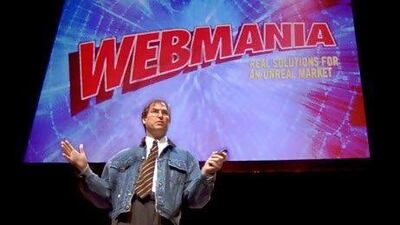When I was young, I would write out a wish list with my two sisters each December. Before that, I would flip through the Sears catalogue and list everything that was of any interest.
While I thought it was better to have a long list, it also meant I reduced the chances of receiving what I really wanted.
With the beginning of strategy-planning season just around the corner, I started to wonder if there was a great deal of difference between my wish list and how strategies are planned?
Often, strategic planning begins with the question: "What do we want to accomplish this year?"
At first glance, this may seem logical, but the essence of strategic planning is making decisions and the root of the Latin word "decision" is "cis" which means to cut out.
Planning a strategy is about the terrifying work of deciding what options must go. Instead of defending what to do, the attention needs to be spent on deciding what is superfluous. This will allow you to concentrate on freeing up resources, and making the "right" choices on going forward.
It was this strategy that helped to transform Apple when the late Steve Jobs went back to the company in 1996. He decided there was no mileage in squeezing every penny out of existing products. Instead, he concentrated on future growth.
This was a wholesale shift in corporate thinking, by telling his senior executives what they should not be doing and why.
Of course, this is one of the hardest activities to undertake for any organisation, as people have time and security invested in what they do.
The survival instinct is to preserve one's area, which means fighting the idea of cutting and moving on to new challenges.
The crux of strategic planning reveals the distinction between "cost leadership" and "value creation".
Costs usually grow at between 3 per cent and 5 per cent each year, and organisations need to focus on continuous improvement in this area.
When the focus is on cost leadership, organisations spend time trying to trim across the board while saying, "Let's keep doing everything we are doing, even if we have to cut back."
The beginning point of a strong strategy is to trim what is not needed. This moves the dialogue from incremental changes in cost management towards cutting out what might have worked in the past but is now a drag on future expansion.
Without this starting point, the proliferation of products and processes continues to grow.
A move towards simplicity begins with the chief executive bringing greater clarity to what the company should not be doing.
Business is about making trade-offs with limitations on capital, resources and market opportunities. So, the focus needs to move from saying "yes" to learning to say "no".
As you embark on your next round of strategy planning, what decisions do you need to make to say "no" so you can say the right "yes"?
Tommy Weir is an authority on fast-growth and emerging-market leadership, the author of The CEO Shift and the managing director of the Emerging Market Leadership Center

